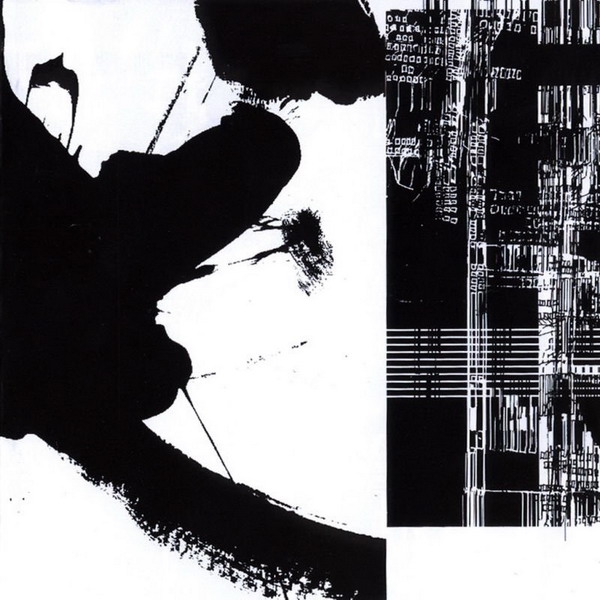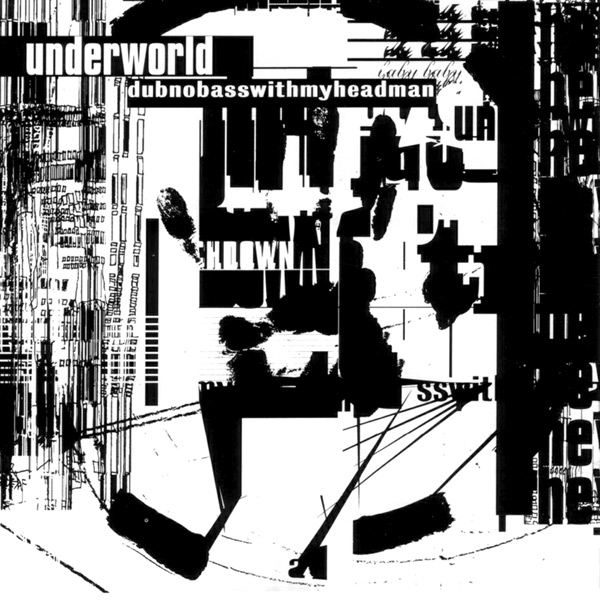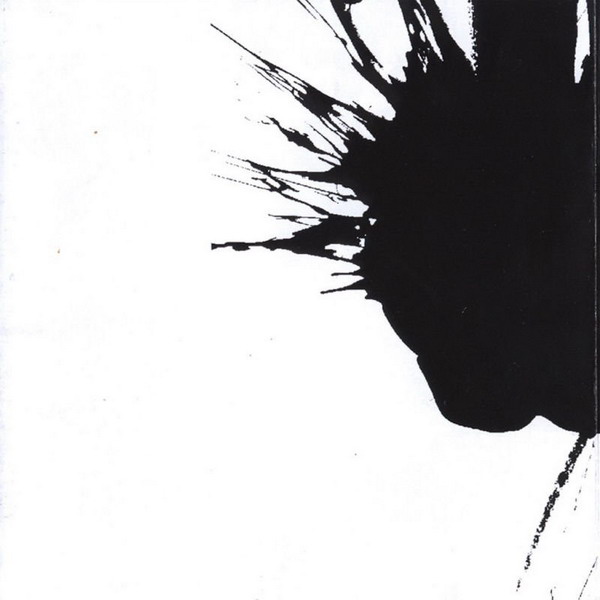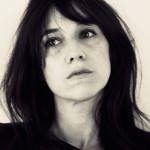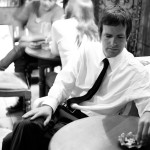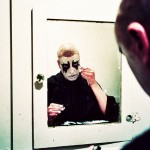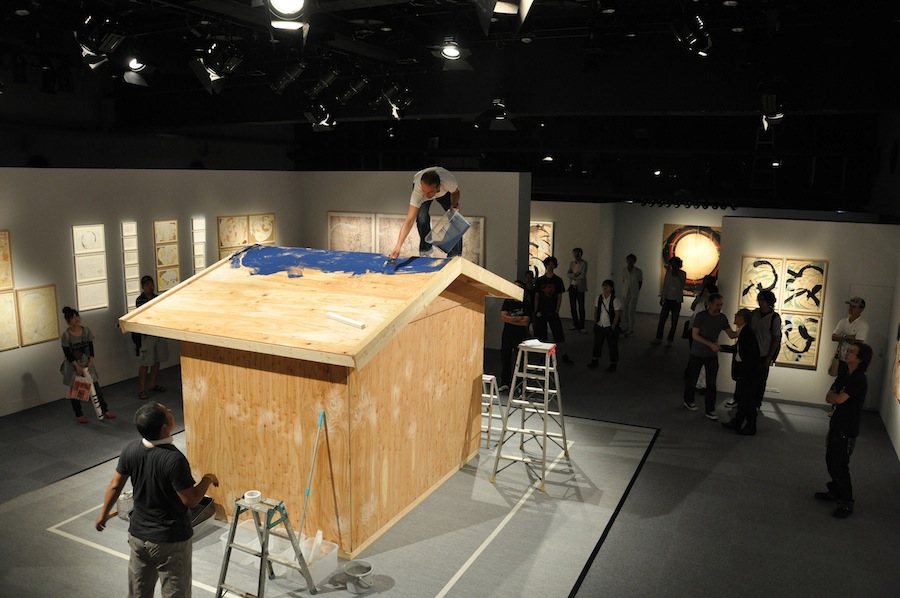
We’re not sure what’s more shocking to people: the fact that Underworld‘s been around since the early ’80s, or what those early records–the group’s “MK1 phase”–actually sound like. Let’s just say they’ve got nothing in common with the Trainspotting song that introduced most of America to one of the most important dance acts of all time. That said, the story of Underworld’s early days is a compelling one, so we asked singer Karl Hyde to relate the entire experience along with how the multi-medium artist recently came full circle with his first solo painting exhibition. The Tokyo show (What’s Going On In Your Head When You’re Dancing?) opened in late August, just a week before the release of Underworld’s latest LP, Barking. Easily the most rewarding Underworld record in years, it’s the duo’s first effort to feature a rotating cast of collaborators, a highly-diverse lot that includes Skull Disco‘s co-founder (Appleblim) and such major floor-fillers as Dubfire, Paul Van Dyk and High Contrast.
Discussed: Quadrophonic sound installations, collage art, free-form house painting, John Cage and Merce Cunningham, accidental albums, Debbie Harry, drum & bass, darkness and light, Freur, and much, much more
While you’ve done art for decades, your recent Tokyo exhibition was your first showcase of solo paintings. How does it feel to be showcasing that side of your work again?
I’m really pleased to be back in the galleries again. I’ve always loved fine art. It’s what I graduated in and what I wanted to do, but I thought it was such an exclusive thing that it intimidated people I knew. So I decided to turn to the radio to get my art across, and Rick felt the same way when I met him. It took a really long time for us to get back into gallery work again–in the ’90s with our friends Tomato. And, really, music was the bridge then because people knew Underworld and weren’t as intimidated to go into the galleries.
So what was the story with your live painting?
Well, the guy who helped me put it together was John Warwicker from Tomato. Rick and I have worked with him over the past 30 years.
He’s your main collaborator over at Tomato then?
Yeah, he is. He was a member of our original band and played videos onstage with us in 1983 when everyone was saying that’ll never catch on. So he’s been right there with us all the way through. The live painting was his idea. He said I should do that on opening day and he a rather unusual garden shed as my object. It was a fantastic, exhilarating experience.
How long did it take for you to finish that piece?
The gallery opened at 11 and I had to be finished by 8.
Did you run it right up to the last minute then?
Not really. The place I’m always happiest is onstage with the band, so I feel really at home painting in front of people. I was actually a performance artist in the ’70s.
Oh no. Most musicians try to hide their “performance artist” past…
[Laughs] Well, I wasn’t the best performance artist, so that’s why I got into installations after that. There’s an energy that comes from making things in front of an audience, you know?
How many people passed through the exhibit over the course of that day?
Gosh, I don’t really know. I blanked them out, really. Unlike an Underworld performance, I focused on the art only. Even though I was singing along to the installation music that Rick created for the piece, the people were very quiet. They didn’t flinch or even laugh. I think they were having some kind of religious experience.
“I grew up with that philosophy, and was fortunate enough to meet people like Rick and John who shared it”
How long have you been painting in that style specifically?
I never was a painter before, actually. Like I said, I was always an installation artist, working with video, quadrophonic sound, fire, and lots of other elements. I never really made it as a painter. It all started a couple years ago in Japan. When a translator was relating my answers to interviewers, I put a pencil and a piece of paper in my hands, and what started to come out was the same marks I saw in my head while I was dancing with the group onstage. So I thought, ‘Well, this is curious,’ and I just kept going on with it, really; developing it from there and working with pieces of all sizes. Most of them are very large–lots of diptychs and triptychs–but I also like working on hotel notepads because I like the irreverence of using those materials.
I have a painting studio at one end of my house and a recording one on the other, so I love moving between the two.
Do you listen to music when making art?
No, I can’t. It would distract me. I listen to talk and sports radio a lot instead.
Doesn’t that make you want to stop sometimes too? Like when you don’t agree with what someone is saying on the radio?
[Laughs] I’ve always found that I can concentrate when I’m doodling, even when I’m in meetings sometimes.
Most of your pieces come together fairly quickly then too?
Some take weeks, but that’s only because I’m working on music most of the time. Some of the paintings were filmed, so I did those in a day, but generally, it takes a lot of time.
Did you sell the shed piece?
They’re talking about donating it to a museum, but I want to auction it for a charity. I enjoyed the experience so much, I’d rather have the money go to someone else.
And what did Rick do again?
Rick’s done installation music for a long time–about 15 years. We’ve been trying to get him to release it. He created a label for that material called Bungalow With Stairs, but it just sat there for a while, so I kinda tricked him into putting a collection of the works together. So we managed to launch his label at the gallery. I’m really pleased about that, too, because now he has an outlet for that particular style of music.
What style is that? Soundscapes?
Yeah, it’s a Welsh thing. [Laughs]
Will there be more records from that label soon then?
I think this will be it for a while, but it’s kick-started something for him.
When you went to art school, they must have not forced you to focus on one medium…
I was really lucky. I went to an unusual art school that had a department called The Third Area. And it was based on an American art school that was started in the ’30s called Black Mountain College. It had a fantastic philosophy and teachers like Merce Cunningham and John Cage–artists who supported one another, and worked together. So I grew up with that philosophy, and was fortunate enough to meet people like Rick and John who shared it. It keeps the doors open for cross-pollination of music, sound, and the visual arts.
So that foundation has always been there?
It has, and the three of us also grew up listening to BBC Radio, and in particular, John Peel, a truly eclectic broadcaster who introduced us to so many different styles of music. You’d get an absolutely cutting-edge track right next to a blues track from the ’30s. It cemented that open way of thinking.
Was Rick always the quiet one? Even your first group, Freur, seemed to position you as the frontman…
Well, Rick was the keyboard player, so that was the position he felt the most comfortable with–just driving the thing, and through the ’80s, he developed into an excellent producer and emerged from behind the scenes. He was the core of what Underworld became. It was very much his vision when it changed from Mk1 to Mk2 in the ’90s. He may be the quiet one, but he’s a huge, driving force at the core of the group.
“Once I saw my first rave, I thought, ‘This is it. This is the best gig I’ve ever been to.'”
Now that so much time has passed, I have to wonder: which record should people check out from the ’80s, if they insist on exploring the early days of Underworld?
Wow, that’s a good question. The only one I’m really proud of is the first single we put out, “Doot-Doot.” I still think that’s a really cool, interesting track. We lost our way a couple times…When we didn’t have a record deal, Rick and I were making this machine-driven music that had a human voice and some guitars on it. So we kept making that music, but we didn’t know anything about club culture in the ’80s. We were kids living in the docks of Cardiff. If we had known dance music back then, we would have had a home to go to. Instead, we kept getting record deals and trying to make pop music. It wasn’t our thing–we weren’t comfortable or good at it–so we Sire dropped us at the end of the ’80s Rick said, “Well, that’s it. I’ve kinda had enough. What we’re making is dance music. Now I just need to find a DJ that helps us connect to that culture.”
What was up with that name?
That was Rick’s doing. It was one of those situations where you go into a studio and are like, “The first thing you say into the microphone is going to be the name of the band.” And he said, “[In an alien-like voice] Freur.” And we went, “Oh, god. Okay.”
Fortunately, we had just finished the music for a movie based on a Clive Barker book called Underworld when they dropped us, and we thought that was a much better name than Freur.
It’s funny, you look confident as a singer even in those early Freur photos.
Performing has never been a scary place for me. It’s always been peaceful–this quiet, chill, zone.
Did you want to secretly make machine-like music all along?
Yeah. I’ve got to thank Debbie Harry and [Blondie guitarist] Chris Stein because at the end of the ’80s, I was asked to audition as a session guitarist for her. At the time, I wasn’t sure about dance music. I’d come from listening to Motown in the ’60s and hanging around nothing but rock kids in the ’70s, so I was stuck there for a while. Playing with Debbie and Chris allowed me to be the lead guitarist on some of the most fantastic pop songs from the ’80s, basically saying “Look at me” and living the dream. Doing that made me think, “Okay, I’m really happy now. I’ve worked with one of the greatest female singers of all time, and one of the greatest songwriters in Chris Stein, I think I’m done now. I think I can hang my guitar up and get on with dance music.”
Oddly enough, Darren Emerson–a 19-year-old DJ at the time–said, “No, don’t hang up your guitar yet.” So it stayed.
What are some of your earliest memories of hearing dance music?
I remember people like 808 State and bands like Soul II Soul. A lot of it was things on pirate radio at the end of the ’80s–things like acid house, which reminded me of being a kid in the early ’70s and listening to German electronic music like Tangerine Dream. Just sweeping, filtered sounds, and the beats of Kraftwerk. So I thought, “Oh my god, we’ve come home.” I didn’t know who was making that music, but I thought it sounded fantastic. And once I saw my first rave, I thought, ‘This is it. This is the best gig I’ve ever been to.’
Who played that?
I remember [jungle producer/DJ] Grooverider was onstage. I remember the women weren’t getting hit on. It was just a really peaceful vibe. No one was looking at the stage. The light show was fantastic, and there were fairground rides in one room and an Alice In Wonderland vibe in another.
Was it a classic rave with different styles of music in each room, too?
Absolutely. And we knew that was the scene we wanted to be a part of then. It took us a while to learn the stuff, though. Darren would play us stuff from Chicago and Detroit–house beats. As a producer, Rick was soaking it up really quickly. It was really scary for me as a singer, though, because at that time, there were no singers [in dance music]. There was just a sample of a diva playing over a house groove. It was like, “Wow, there’ no job for me,” and if I wanted one, I’d have to rethink the role of the singer. That was when I started to think about how the rhythm section has always supported the singer, and that I’d have to start doing the opposite–supporting the rhythm section.
So how much time went into the making of your first Mk2 record (1994’s Dubnobasswithmyheadman)?
I couldn’t really say. Like any band, we threw a lot of things away. I remember we did a 12-inch called Mother Earth / The Hump and Rick sold it to DJ shops from the back of his car. That was the first profit we ever made. The writing was on the wall then–”This is what we’re here to do. We’re not going back.”
So even though you were on a major in the ’80s, you didn’t make any money?
We were losing money hand over fist. We never even made a red cent. So our new manager lent us money to make that 12-inch and we said, “Never again.” We had no intentions of being a band or making albums anymore. We had formed Tomato and were taking commissions to do music for TV commercials, too, so we could pay the rent and music became fun again. It wasn’t about doing a job or fitting a demographic. We could make music that was a response to listening to music in clubs every night–music from the heart. I know it’s a cliche to say that, but it’s true. And oddly enough, as soon as we started doing that, it took off.
To bring things back to your art, the cover of Dubnobasswithmyheadman is considered to be pretty important in the history of electronic music albums. What was the story with that?
At the time, everyone was making album covers on computers–very hard-edged digital graphics. And we didn’t want to do that. We wanted to do the opposite–something that was free-form, a kind of abstract expressionism. So we had a jam session in our small Soho office. We asked everyone in Tomato to make marks on this sheet and then John Warwicker cut it up and re-assembled it into the sleeve.
The album came about by accident, you know. We just kept recording, and then one day Rick said, “You know, I think I’ve put together an album.” It was a bit weird, really, like, “Why would we want to do that? That’s what bands do.” We’re doing 12-inches now and having good fun, but then he played it for us and we said, “That’s really good.” We were working with Junior Boy’s Own then. They were really well-known for house music and parties, but they wanted to have bands on their roster. So they encouraged us to finish an album and put it out.
We also did this performance at Glastonbury in 1992, as part of a larger group called the Experimental Sound Field. The owner of Glastonbury literally gave us our own field, so we set up this Quadrophonic sound system with a tower in the middle and Pink Floyd’s Quadrophonic mixing desk. The top floor of the tower had all of the projection and light gear, and we were on the bottom, performing and jamming with DJs. I think we performed for about seven hours the first night, and we did 18 the second. That became the blueprint for Underworld, a blueprint born of going to clubs and seeing a brilliant DJ set ruined by someone turning up to sing their latest single to a backing track. We wanted to be the kind of group that kept the floor dancing–improvising and going with the flow like a DJ would, then just segueing into the next DJ at the end.
How did things change once Darren left the group?
They didn’t. No disrespect to Darren, but he was spending more time as a DJ when we worked on our second album (1996’s Second Toughest In the Infants). We were also going to drum & bass clubs then, and Darren wasn’t. It was sad to lose him, but we didn’t miss a beat, really. We just carried on writing with the same team.
So everyone was happy in the end?
Yeah, and we’re all good friends now.
Was your third record (1999’s Beaucoup Fish) as tough to make as some people have claimed?
No. We built studios in this house, so Rick would carry on engineering and recording, and I’d come in to do vocals in the same way as we always have. It was no less tough than the other albums we made.
“Rick’s great at turning the darkness I bring on its head”
What about this new one? It’s the first time you’ve brought in so many outside collaborators.
It is. We’ve had people remix us for the past 20 years, but we never had a chance to jam with, and respond to, them. So on this one, we finally said we should open the doors to other people and see what happens.
Did you listen to a lot more drum & bass while making this record?
Well, we already had that track “Scribble.” It’s a big tune from our live show. A lot of the material from this album was developed on the stage, then we looked for producers who could be linked to those tracks well.
“Grace” and “Between Stars” have a darker vibe to them. When were they done?
“Between Stars” is more recent. “Grace” was an interesting one. It started off as a house track, but didn’t sound good, so Rick kept the vocal and wrote new music to it. That became the basis of the new Underworld, I think. When I first heard him play it, I said, “Rick, you just reinvented the group. Fantastic. Well done. Let’s take it from here.”
So the next record might be more melancholic?
Well we’ve always fused melancholia and a dark side with the euphoria of our music. Rick’s great at turning the darkness I bring to the group on its head. If you listen to the lyrics of our most euphoric songs, it’s easy to stop and think, ‘How is that uplifting? This is really dark.’ But since it has this beautiful music, that’s the first thing you hear.
I do know we want to keep working with other people on the next record. It’s the Miles Davis approach–the only way to move forward as you get older is to work with older people. Otherwise, you get stuck in your ways. And as artists and musicians, that’s the last thing we want to do. There’s too much to explore before we shut the door on it.
